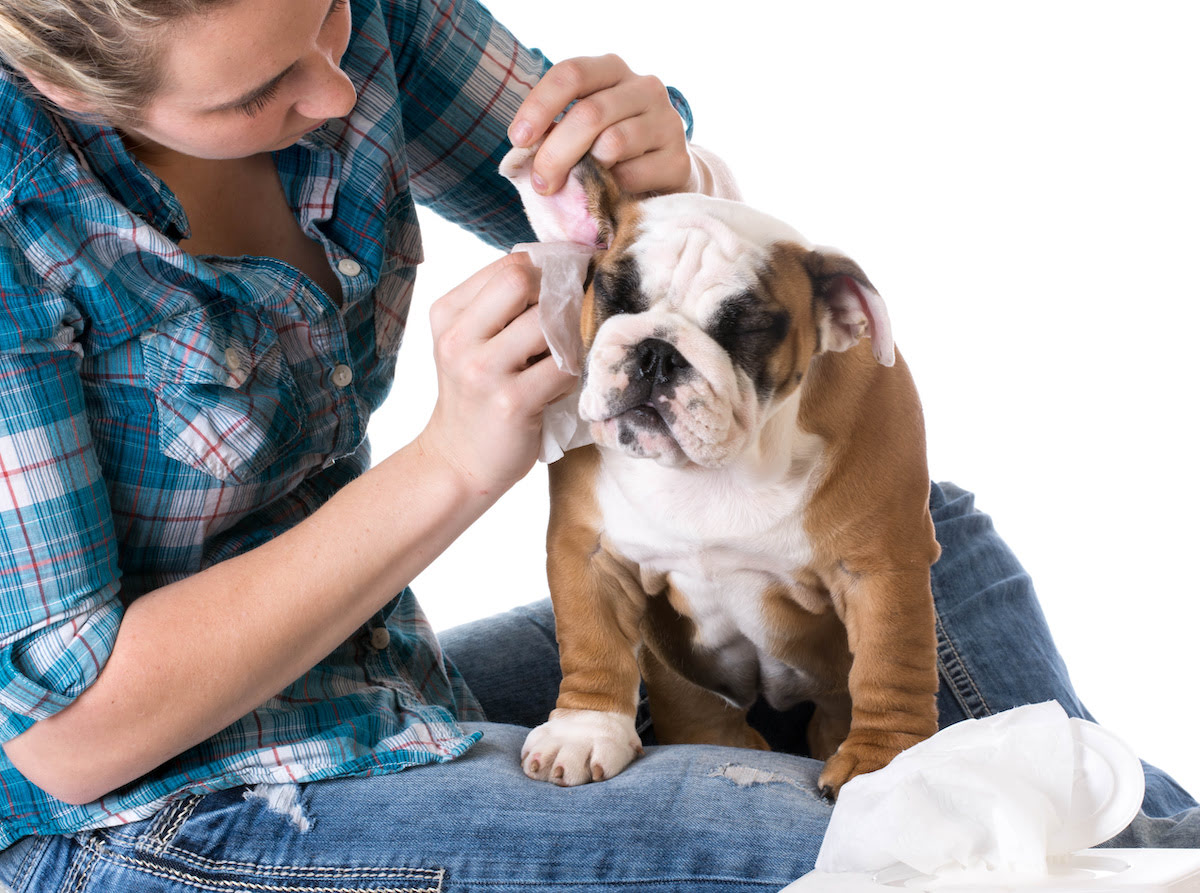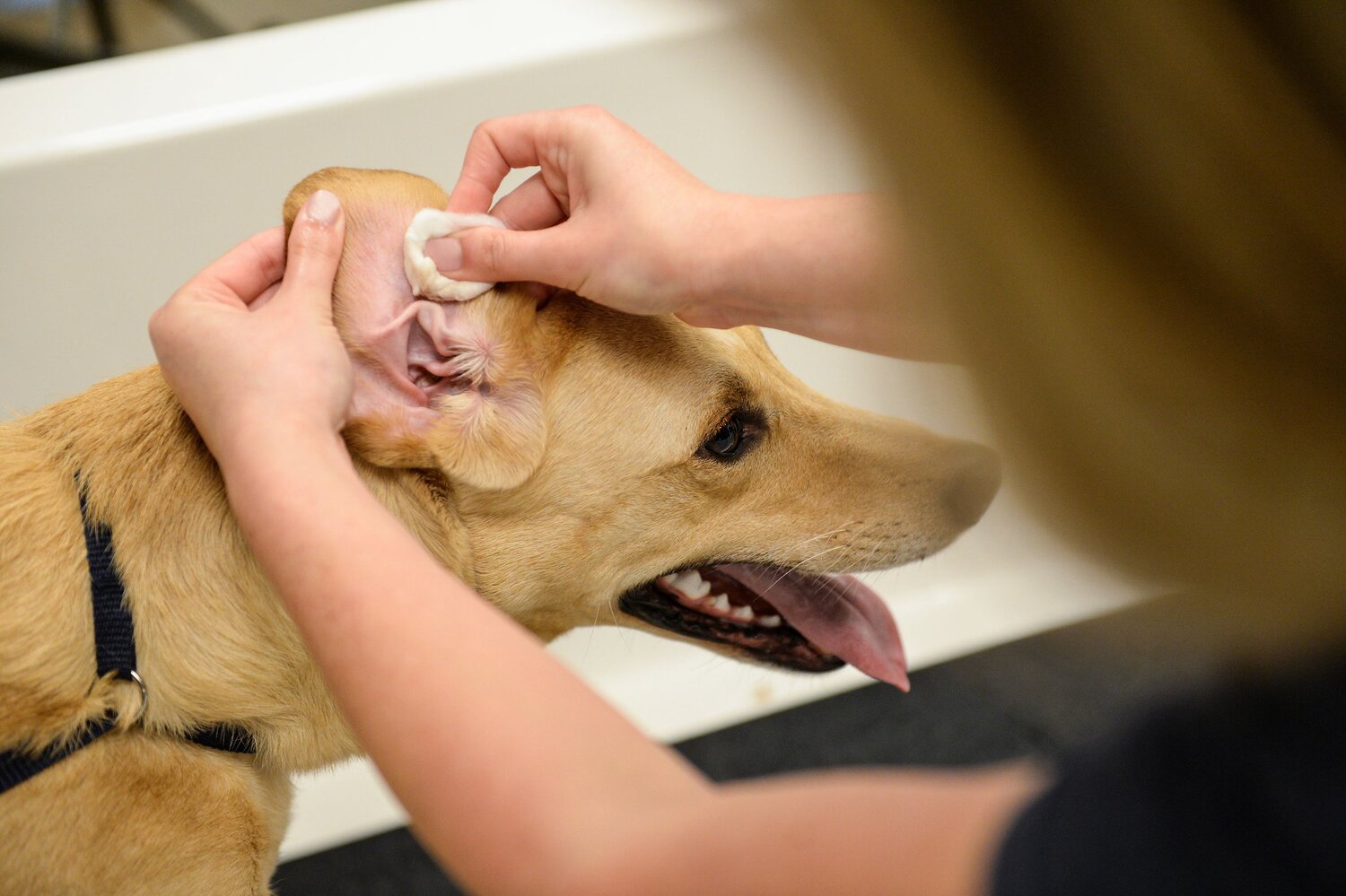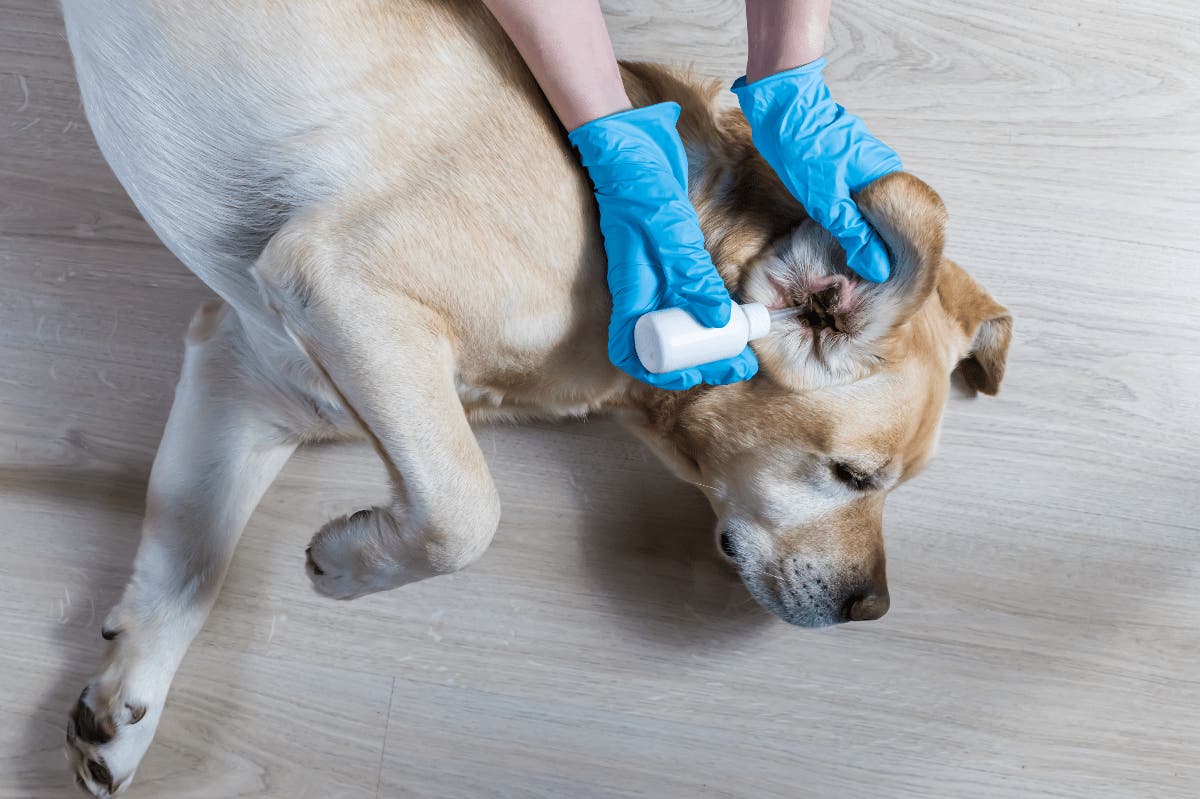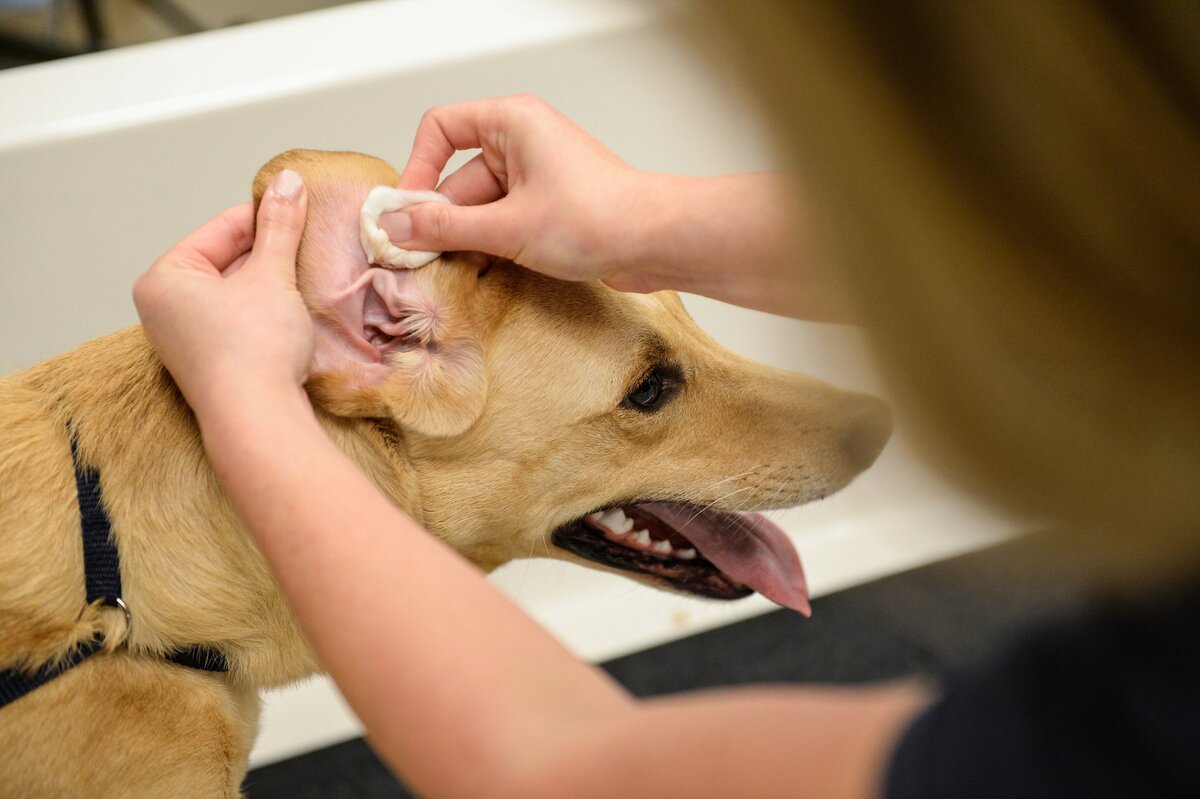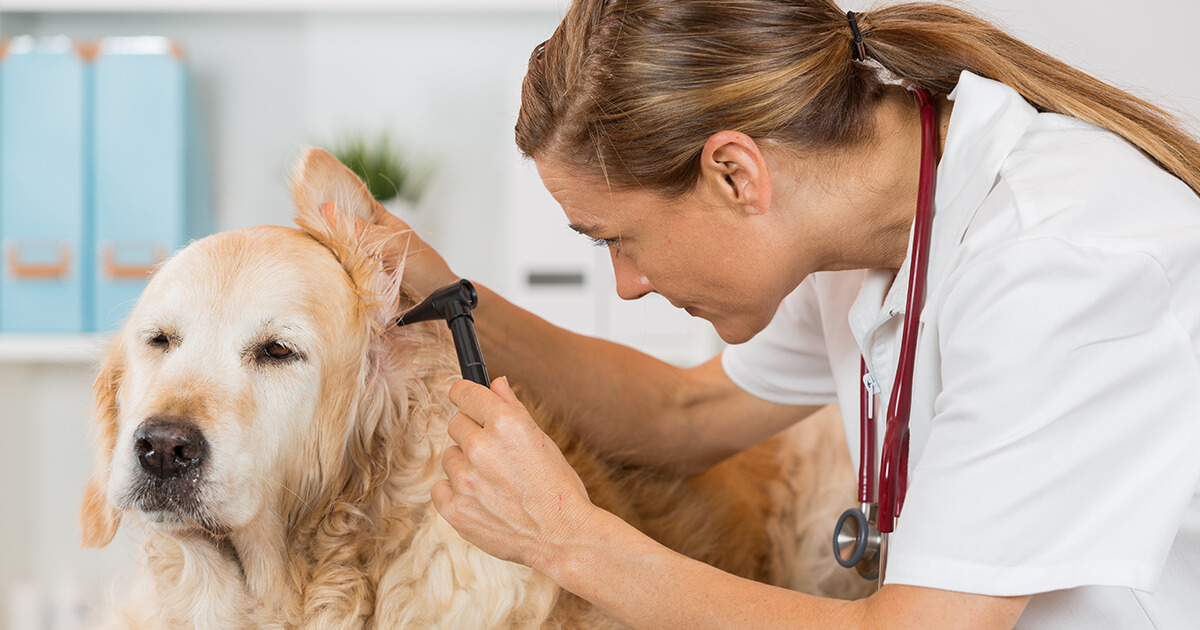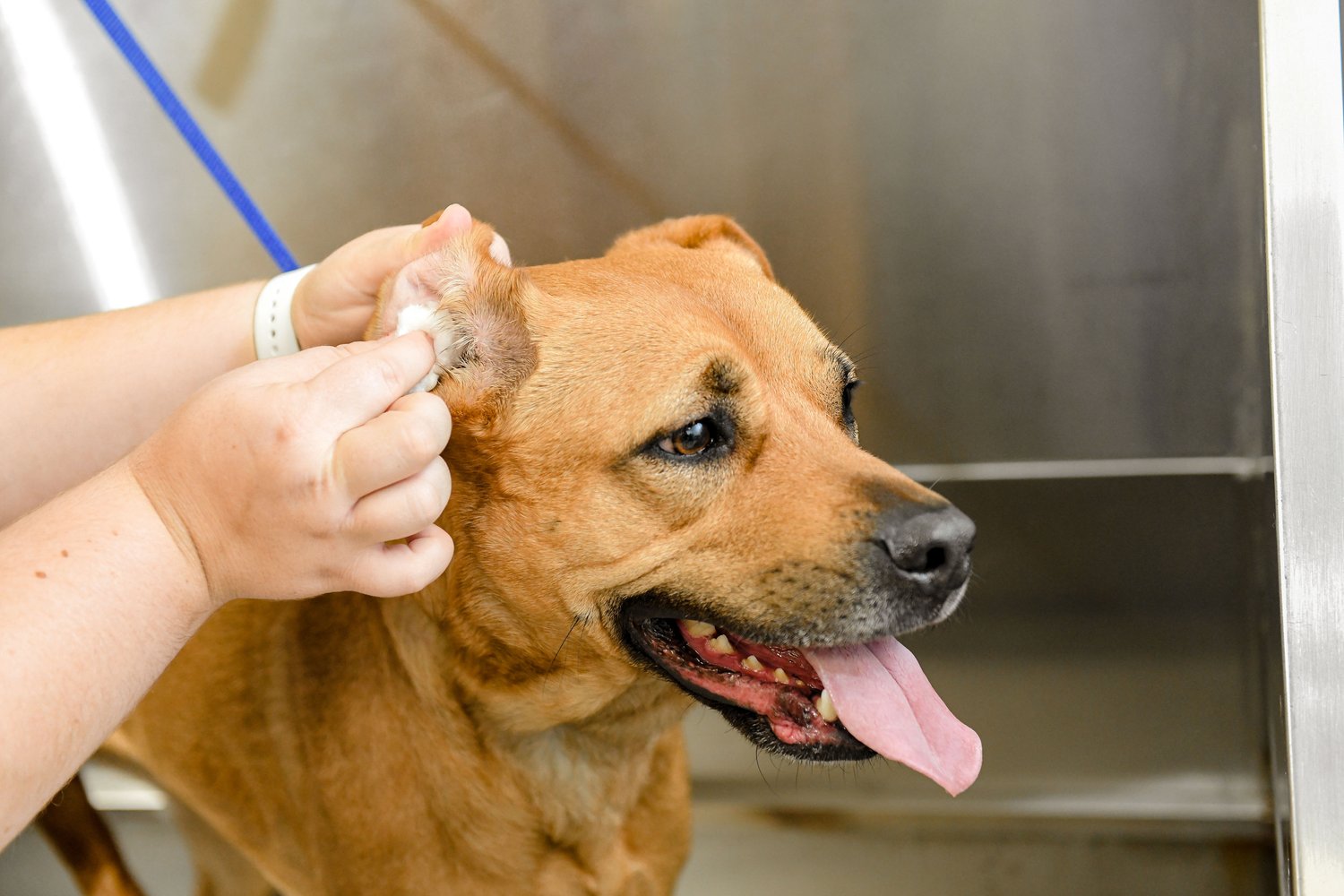Home>Health & Wellness>Common Health Issues>Eye and Ear Health>How Much Cephalexin Do You Give A Dog For An Ear Infection
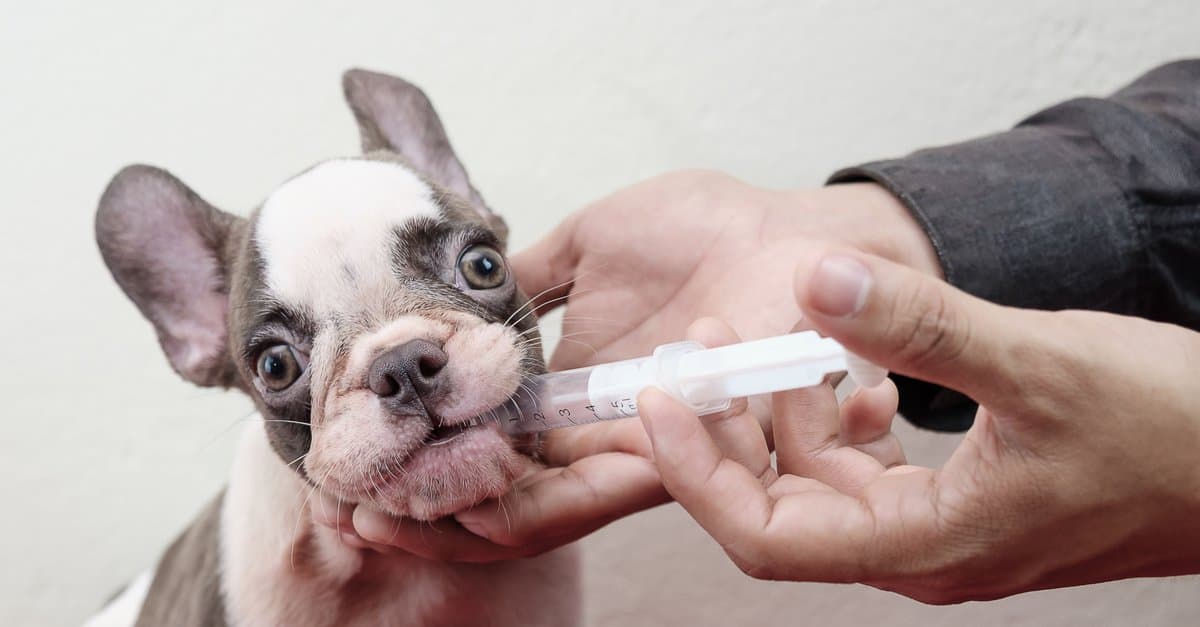

Eye and Ear Health
How Much Cephalexin Do You Give A Dog For An Ear Infection
Published: February 2, 2024
Learn the proper dosage of cephalexin for treating your dog's ear infection and promoting overall eye and ear health. Expert advice on administering medication safely.
(Many of the links in this article redirect to a specific reviewed product. Your purchase of these products through affiliate links helps to generate commission for Pawsomeoldies.com, at no extra cost. Learn more)
Table of Contents
Introduction
Ear infections are a common health issue among dogs, often causing discomfort and distress. Just like humans, dogs can experience the discomfort of an ear infection, leading to symptoms such as itching, redness, and discharge. In such cases, it's crucial for pet owners to seek appropriate treatment to alleviate their furry friend's discomfort and prevent the infection from worsening.
Cephalexin, a widely used antibiotic, is often prescribed by veterinarians to combat bacterial ear infections in dogs. This medication is part of the cephalosporin class of antibiotics and is effective in treating a variety of bacterial infections, including those affecting the ears. Understanding the proper usage and dosage of cephalexin is essential for ensuring the well-being of our canine companions.
In this comprehensive guide, we will delve into the details of cephalexin and its role in treating ear infections in dogs. From understanding the medication to administering it safely and effectively, this article aims to equip pet owners with the knowledge they need to support their furry friends' ear health. Let's embark on this journey to explore the world of cephalexin and its significance in the well-being of our beloved canine companions.
Understanding Cephalexin
Cephalexin, a potent antibiotic, belongs to the cephalosporin class of medications. It is widely utilized in veterinary medicine to combat bacterial infections in dogs, including those affecting the ears. This medication works by disrupting the formation of the bacterial cell wall, ultimately leading to the destruction of the bacteria causing the infection.
Cephalexin is effective against a broad spectrum of bacteria, making it a versatile choice for treating various types of infections. When it comes to ear infections in dogs, cephalexin targets the specific bacteria responsible for the condition, helping to alleviate the discomfort and symptoms experienced by the affected canine.
As a cephalosporin antibiotic, cephalexin is considered safe for use in dogs when administered under the guidance of a veterinarian. It is important to note that cephalexin is specifically designed to combat bacterial infections and is not effective against viral or fungal infections. Therefore, a proper diagnosis by a veterinarian is crucial to determine whether cephalexin is the appropriate treatment for a dog's ear infection.
When prescribed by a veterinarian, cephalexin is typically available in the form of capsules or liquid suspension, allowing for flexible administration based on the dog's size and specific needs. The dosage and duration of cephalexin treatment are determined based on the severity of the infection and the individual characteristics of the dog.
Understanding the role and mechanism of cephalexin in treating ear infections in dogs is essential for pet owners. By gaining insight into the medication's function and effectiveness, pet owners can actively participate in their dog's treatment journey, ensuring that their furry companions receive the care they need to overcome the discomfort of an ear infection.
In the next section, we will delve into the dosage guidelines for cephalexin in dogs, shedding light on the appropriate administration of this medication to promote the well-being of our canine friends.
Dosage Guidelines for Dogs
When it comes to administering cephalexin to dogs for the treatment of ear infections, it is crucial to adhere to specific dosage guidelines to ensure the medication's effectiveness and the dog's safety. The appropriate dosage of cephalexin is determined based on factors such as the dog's weight, the severity of the infection, and the veterinarian's assessment of the individual case.
The standard dosage of cephalexin for dogs is 10 mg to 15 mg per pound of body weight, administered orally every 8 to 12 hours. However, it is important to note that the veterinarian may adjust the dosage based on the specific needs of the dog and the nature of the ear infection. For mild to moderate infections, a lower dosage within the recommended range may be sufficient, while more severe infections may require a higher dosage to effectively combat the bacteria causing the infection.
It is essential for pet owners to strictly follow the veterinarian's prescribed dosage and administration schedule. This includes ensuring that the full course of medication is completed, even if the dog's symptoms improve before the medication is finished. Abruptly discontinuing the medication can lead to the reemergence of the infection and potential antibiotic resistance, emphasizing the importance of completing the prescribed treatment regimen.
In cases where a dose is missed, it is advisable to administer the missed dose as soon as possible, unless it is close to the time for the next scheduled dose. In such instances, the missed dose should be skipped, and the regular dosing schedule should be resumed to maintain the appropriate intervals between administrations.
Furthermore, it is crucial to weigh the dog accurately to determine the precise dosage of cephalexin. Using a reliable pet scale or seeking assistance from a veterinarian or professional pet care provider can ensure that the correct dosage is administered, minimizing the risk of under or overdosing the dog.
By adhering to the prescribed dosage guidelines and administration schedule, pet owners can contribute to the successful treatment of their dog's ear infection, promoting the canine's comfort and well-being. The next section will delve into the essential aspects of administering cephalexin to dogs, providing insights into the best practices for ensuring the safe and effective delivery of this medication to our beloved furry companions.
Administering Cephalexin to Dogs
Administering cephalexin to dogs requires careful attention to detail and a compassionate approach to ensure the medication is delivered safely and effectively. Here are the essential aspects to consider when administering cephalexin to dogs for the treatment of ear infections:
1. Oral Administration
Cephalexin is typically administered orally, either in the form of capsules or liquid suspension. When administering the medication, it is important to follow the veterinarian's instructions regarding the dosage and frequency of administration. For dogs receiving cephalexin in capsule form, the capsule can be carefully opened, and the contents can be mixed with a small amount of food to facilitate ingestion. Alternatively, the capsule can be administered directly into the dog's mouth, followed by a small amount of water to ensure the medication is swallowed.
2. Palatability Considerations
While cephalexin is an effective antibiotic, some dogs may exhibit reluctance to consume the medication due to its taste or texture. In such cases, pet owners can explore strategies to enhance the palatability of the medication, such as mixing it with a small amount of wet food or a tasty treat that the dog enjoys. This can help alleviate any resistance to taking the medication and ensure that the full dosage is successfully administered.
3. Monitoring and Encouragement
During the administration of cephalexin, it is important to monitor the dog's response and ensure that the medication is ingested without any issues. Providing a calm and reassuring environment can help alleviate any anxiety or discomfort the dog may experience during the administration process. Additionally, offering positive reinforcement, such as praise or a small reward after the medication is taken, can create a positive association with the administration process, making it easier for future doses.
4. Adherence to Schedule
Consistency in administering cephalexin is crucial for the medication's effectiveness. Pet owners should strive to adhere to the prescribed dosing schedule, ensuring that each dose is administered at the appropriate intervals. Setting reminders or incorporating the medication administration into the dog's daily routine can help maintain consistency and prevent missed doses.
5. Follow-Up and Communication
Throughout the course of cephalexin treatment, open communication with the veterinarian is essential. Any observed changes in the dog's condition or behavior should be promptly communicated to the veterinarian, allowing for timely adjustments to the treatment plan if necessary. Additionally, scheduled follow-up appointments can provide the veterinarian with the opportunity to assess the dog's progress and make informed decisions regarding the continuation of the treatment.
By approaching the administration of cephalexin with attentiveness and empathy, pet owners can contribute to the successful treatment of their dog's ear infection, promoting the canine's comfort and well-being. This proactive involvement in the treatment process reflects the deep bond between pet owners and their beloved furry companions, ensuring that they receive the care and support they deserve.
The next section will delve into the crucial aspects of monitoring and follow-up during cephalexin treatment, shedding light on the importance of ongoing assessment and care to support the dog's recovery from an ear infection.
Monitoring and Follow-Up
After initiating cephalexin treatment for a dog's ear infection, diligent monitoring and follow-up play a pivotal role in ensuring the effectiveness of the medication and the overall well-being of the canine patient. Here are the essential aspects of monitoring and follow-up that pet owners should prioritize throughout the treatment process:
1. Observing Symptoms
Pet owners should closely observe the dog for any changes in symptoms associated with the ear infection. This includes monitoring for signs of improvement, such as reduced itching, decreased redness, and a decline in discharge from the affected ear. Conversely, any persistence or exacerbation of symptoms should be promptly noted and communicated to the veterinarian. By maintaining a keen awareness of the dog's symptoms, pet owners can provide valuable insights into the progression of the infection and the response to cephalexin treatment.
2. Adverse Reactions
While cephalexin is generally well-tolerated by dogs, there is a possibility of adverse reactions in some cases. Pet owners should be vigilant for any signs of adverse reactions, such as gastrointestinal upset, allergic reactions, or unusual behavioral changes in the dog. Promptly reporting any concerning reactions to the veterinarian is crucial for ensuring the dog's safety and well-being during the course of treatment.
3. Completion of Treatment
Completing the full course of cephalexin treatment is paramount for preventing the recurrence of the ear infection and minimizing the risk of antibiotic resistance. Pet owners should diligently ensure that the prescribed duration of treatment is adhered to, even if the dog's symptoms improve before the medication is finished. This commitment to completing the treatment regimen as prescribed contributes to the comprehensive eradication of the bacterial infection, promoting the dog's long-term ear health.
4. Scheduled Follow-Up
Regular follow-up appointments with the veterinarian are integral to the monitoring and follow-up process. These appointments provide the veterinarian with the opportunity to assess the dog's response to cephalexin treatment, evaluate any changes in the ear infection, and make informed decisions regarding the continuation of the treatment. Open communication during follow-up appointments allows pet owners to receive personalized guidance and recommendations based on the dog's progress, fostering a collaborative approach to the canine's care.
5. Ongoing Communication
Maintaining open and proactive communication with the veterinarian throughout the treatment period is essential. Any observations, concerns, or questions related to the dog's response to cephalexin should be promptly shared with the veterinarian. This ongoing dialogue enables the veterinarian to provide tailored support and adjustments to the treatment plan as needed, ensuring that the dog receives comprehensive care aligned with its individual needs.
By prioritizing diligent monitoring and proactive follow-up, pet owners can actively contribute to the successful management of their dog's ear infection through cephalexin treatment. This commitment to attentive care reflects the deep bond between pet owners and their beloved canine companions, underscoring the dedication to safeguarding the dog's health and well-being.
Incorporating these monitoring and follow-up practices into the treatment journey empowers pet owners to play an active role in supporting their dog's recovery from an ear infection, ultimately fostering a positive and nurturing environment for the canine's overall ear health.


